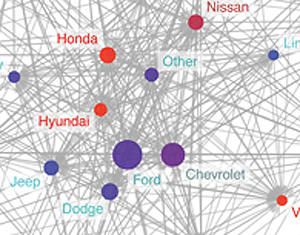Al Lord, who served as Sallie Mae CEO from 1997 to 2005, now says the loan system is criminal
The average tuition and room and board at most four-year private colleges in the United States has https://guaranteedinstallmentloans.com/payday-loans-la/ risen by nearly 800 percent since 1980, or more than five times the rate of inflation. Today, a four-year degree at a private college costs nearly $200,000 on average. Meanwhile, a public college costs half that for in-state students but almost as much for those from out of state.
At the University of Alabama, for instance, out-of-state students pay $180,000 for a four-year education, and even after grants and scholarships are factored in, many Alabama students and their parents take on tens of thousands of dollars in debt, and in some cases more than $100,000, Mitchell writes.
And that’s the cheap option. At the University of Southern California’s dental school, tuition and room and board cost $152,000 — for the first year.
Ed Fox, the first CEO of Sallie Mae, the quasi-public agency created by Congress to act as a middleman for the student-loan industry
But those ridiculous tuition fees didn’t come out of nowhere. The problem started when the federal government gave families a blank check to allow students to attend the school of their choice, regardless of its cost. The more Americans borrowed, the more colleges raised tuition. Colleges have abused their tremendous pricing power, Mitchell writes.
Lyndon B. Johnson, as the Senate majority leader, first argued for the federal government to create a student loan program in the 1950s. His idea had the best of intentions — Johnson himself had benefited from student loans — but it soon evolved into what Mitchell describes as the quintessential form of crony capitalism.
In one way, it could be argued that the federal student loan program achieved its mission

By the 70s, Congress had created a quasi-public agency called Sallie Mae, a sort of middleman for the student-loan industry. The agency funneled billions to schools and banks, and itself made enormous profits off the whole operation, writes Mitchell.
But to millions of families, the loans offered by Sallie Mae were seen as a gift. They believed these institutions had their best interests at heart, Mitchell writes.
When Lisa applied for her student loans, she was shocked at how easy it was
Before the rise of the government’s loan program, colleges like Stanford (left) and the University of Minnesota made loans to students directly. Default rates were low, Josh Mitchell writes. Alamy (2)
She found it even less complicated than when she applied for a loan to buy a stereo. Here, the school didn’t even check her credit, Mitchell writes.
The financial counselors at each of her schools reassured her that student debt, which was rapidly rising, was good debt, because it was an investment in her future. You’ll be able to pay it off with the money you earn once you graduate, they explained.
But by the time Lisa graduated, she owed more than twice as much as the average annual salary of $55,000 for college graduates that year, Mitchell writes.
This type of debt has reshaped modern American lives in many ways. It has caused many couples to delay marriage, to rent rather than buy homes and to hold off on starting businesses.
They are choosing jobs solely for higher salaries, rather than jobs that best suit their talents and interests, so they can pay off their debt, Mitchell writes.
It opened up higher education to the masses, Mitchell writes. Anyone who has wanted to go to college has been able to, rich or poor. Today, half of the US adult population has an associate’s or bachelor’s degree, because student loans gave people the money to pay for it. Without loans, many would have never gone to college.
